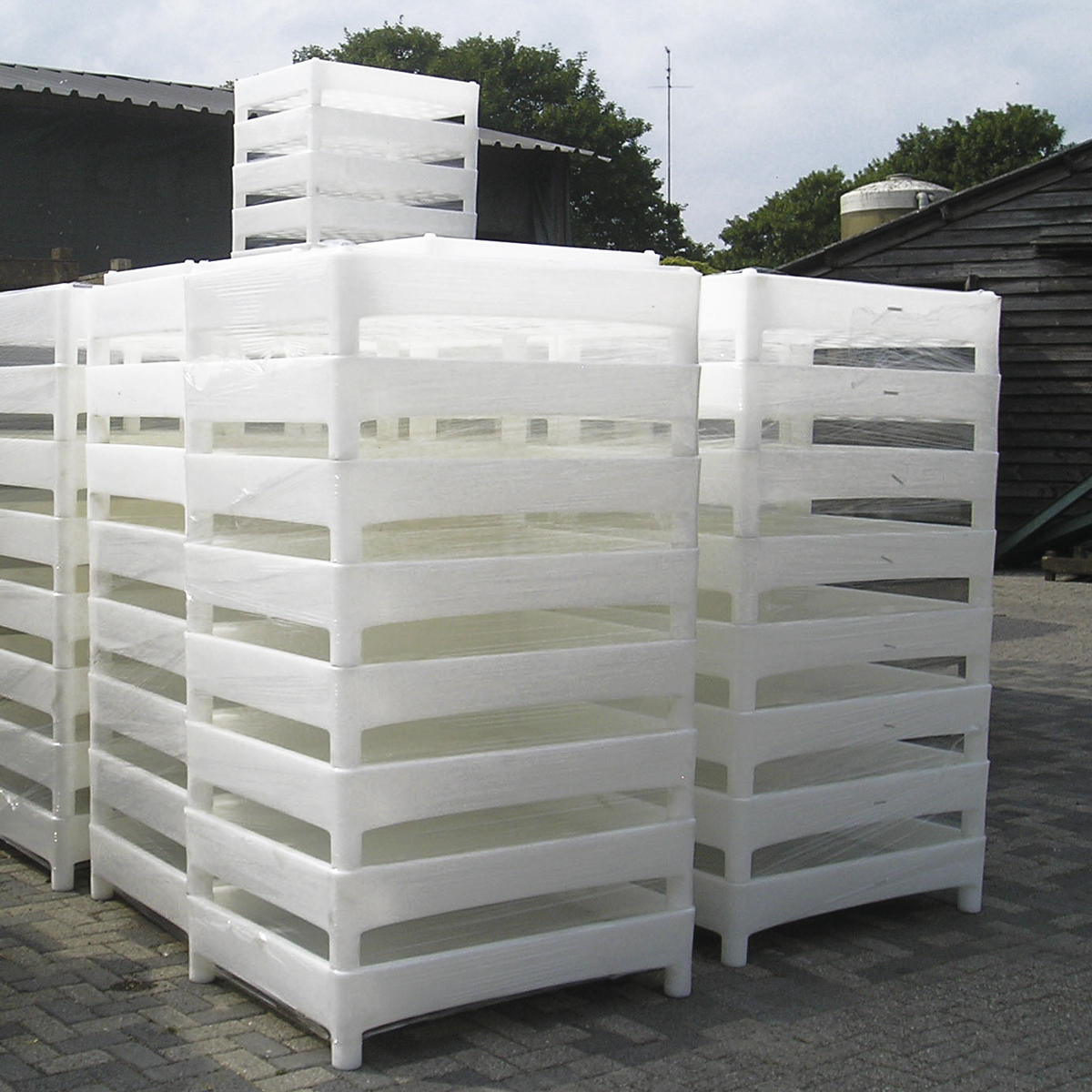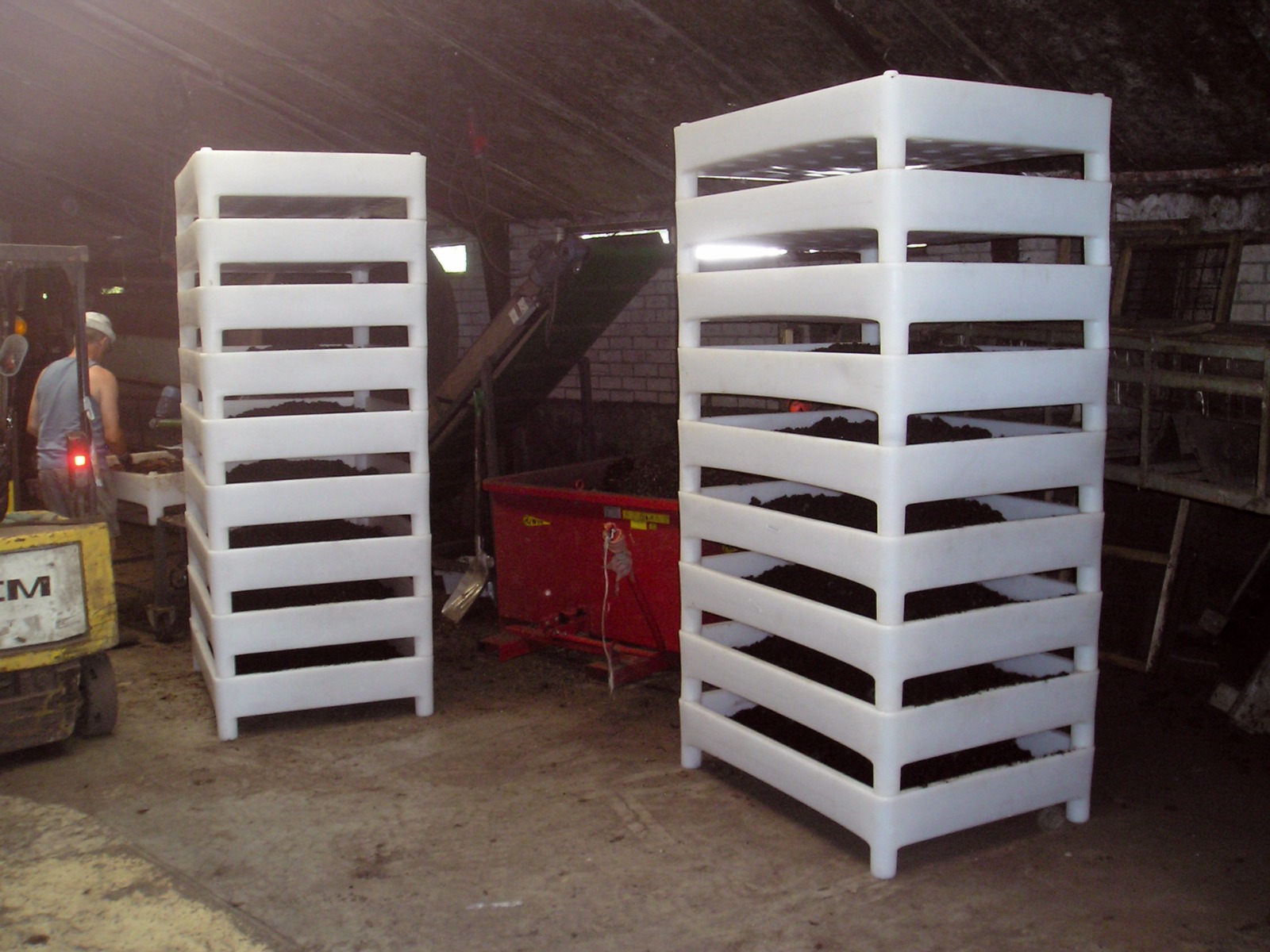The breeding of worms
Are you interested in breeding worms/earthworms on a small or larger scale? Then you have come to the best place with us. For standard small-scale breeding with manual feeding and harvesting or switching to semi/full automic breeding, we can help you with the necessary products.
If you have any questions, please do not hesitate to contact our product specialists.
More about insect breeding
Rotomolded Plastic Tray - One Piece
More and more farmers are looking for income in addition to traditional livestock farming. Engels has already successfully assisted several projects in the new sector of insect farming. One of these request came from a pier grower in search for a better container for the cultivation process than the wooden containers they had been working with until then. The box did not yet exist, but both parties liked the idea of developing a new ideal box.
The white plastic containers are a copy of the wooden containers in size. In use, however, they are very different. The advantages of the plastic container over the wooden container at a glance:
- The plastic containers weigh much less, only 15 kilos
- Where the wooden containers can hardly be handled by one man, you can easily turn, move, etc. the plastic container where necessary
- In addition to being light, plastic is also smooth: so no more splinters or hard surfaces
- In addition, plastic lasts longer and stays in its original shape for longer
- The pegs of the box have round lugs which make it easy and stable to stack the boxes (straight, up to 5 meters high).
The breeding container on the right was designed for a customer and therefore cannot be freely sold. We are developping our own breeding boxes. Ask our sales department about the possibilities for your company.

Breeding worms professionally for export
Engels produces 115-litre white plastic breeding trays, which replace the wooden (chicory) trays which form the nursery for billions of worms. This container did not yet exist, but both parties liked the idea of developing a new ideal container .
Engels suggested that the tray be produced by rotational moulding. The start-up costs of rotational molds are significantly lower than those of injection moulding, for example. Furthermore, the wall thickness is free, so that you can make the product as strong as you want, without reinforcing ribs.
There was close collaboration throughout the entire process. For example, we took our customer to one of the production sites where the containers were produced, so that they could see the mold at work for themselves. A first model was already taken to test on the filtering and tilting machines in the nursery.
Soon after the first model, the container reached its final form. The knowledge of Engels about production techniques and plastic properties and the knowledge of application and use at the customers end have led to this innovative and successful product.
Result: a new stackable plastic container with dimensions: 1200x900x250 mm, double-walled, very durable, lightweight.


